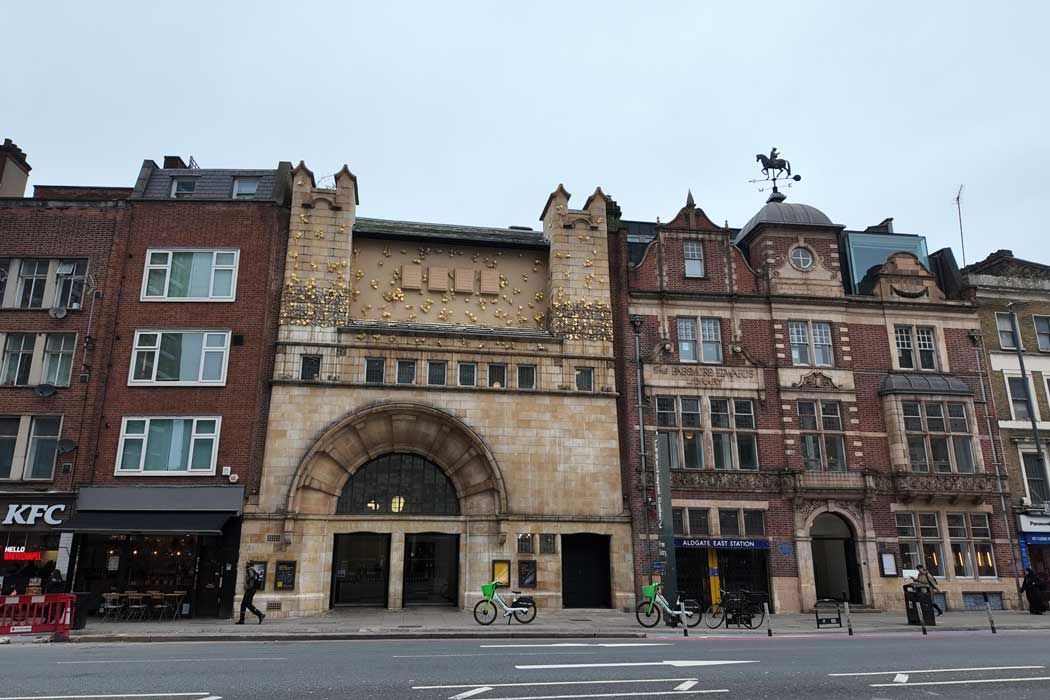Established in 1901, Whitechapel Gallery was one of the first art galleries in London dedicated to hosting temporary exhibitions.
Whitechapel Gallery is noted for hosting a 1938 exhibition exhibiting Pablo Picasso’s Guernica and it is also credited with introducing Pop Art to the general public. With a rich history of presenting groundbreaking exhibitions and supporting emerging artists, the gallery offers visitors an experience at the forefront of contemporary art culture.
In 2009 Whitechapel Gallery doubled in size after acquiring the neighbouring Passmore Edwards library building and it now has nine exhibition spaces plus a bookshop and restaurant.

What to see at Whitechapel Gallery
Visitors can see a range of contemporary art exhibitions that reflect the diversity and innovation of the art world with exhibitions drawing from both international artists and artists within the local community.
Exhibitions at Whitechapel Gallery cover a range of artistic media, including painting, sculpture, photography, video art and installation. These exhibitions often explore relevant social, political and cultural themes, providing visitors with thought provoking insights into contemporary issues.
Temporary exhibitions at Whitechapel Gallery
Whitechapel Gallery does not have a permanent collection and focuses solely on hosting a programme of temporary exhibitions. Current and planned exhibitions include:
London Open Live
The 2025 edition of The London Open (until 7 September 2025) focuses on performance and live art. Established in 1932, this open call exhibition highlights London’s artistic activity and evolving themes. This year’s programme aims to support live art, a field heavily impacted by the pandemic, through performances and discussions.
Hamad Butt: Apprehensions
Apprehensions (until 7 September 2025) is the first major survey of Hamad Butt (1962–1994), a British artist known for his conceptually ambitious work. His installations explore links between science, sexuality and identity, often referencing the AIDS crisis. The exhibition includes Familiars and Transmission, both using dangerous materials to reflect themes of risk and precarity. Paintings, archival material and a reconstructed early work are also on show, offering insight into Butt’s short but influential career.
Popcorn!
Popcorn! is a sound-focused exhibition (until 21 September 2025) by Jenny Pengilly. It explores how Foley artists create everyday film sounds using improvised techniques. Visitors of all ages can interact with props, visuals and soundtracks to produce their own effects. The exhibition includes a recording space called Static Studios. It draws on workshops with children at a specialist school and features contributions from Pengilly’s niece. The work reflects Pengilly’s interest in sound, learning and children’s creative expression.
Visiting Whitechapel Gallery
Whitechapel Gallery is near where the East End meets The City of London. It is on Whitechapel High Street, close to Brick Lane and the vibrant Whitechapel area but also just a few minutes walk to The City of London.
It is next door to Aldgate East tube station (on the District and Hammersmith & City lines) and Whitechapel tube station (Elizabeth, District and Hammersmith & City lines plus the Overground) is a 12-minute walk away. It is also served by several bus routes including buses 25, 205 and 254.
The gallery is open Tuesday to Sunday (closed on Mondays) and entrance is free of charge, although some exhibitions may have an additional charge.
Visitor facilities include a bookshop and restaurant and the gallery’s location means that there are plenty of other places to eat and drink nearby, particularly on Brick Lane, which is noted for its Bangladeshi restaurants.
Because the gallery has a focus on temporary exhibitions, the time to allow for your visit will vary depending on which exhibitions are currently running. A visit could last anywhere from half an hour to several hours, even up to half a day if there is an installation where several feature-length films are being shown.
We may earn a small commission if you book after clicking the links below.


There are no comments yet.